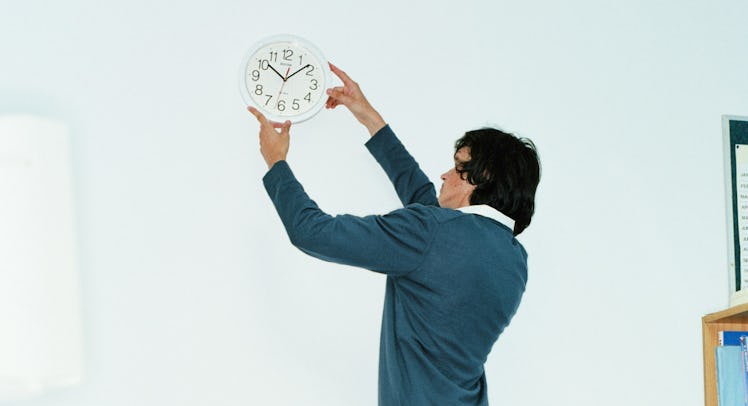Daylight Savings Time Has Sucked For 50 Years
Let's call the whole thing off.

On April 30, 1967, Daylight Saving Time went into effect throughout the United States for the first time. The 1966 Uniform Time Act mandated that government clocks in states that had not explicitly voted for exemption, be set ahead one hour at 2 a.m. on the last Sunday in April and then turned back one hour on the last Sunday in October. The idea was to give Americans an opportunity to enjoy some post-work sunshine, but over the last 50 years studies have demonstrated that daylight savings increases the risk of car accidents, stroke, and suicide while costing the U.S. billions of dollars.
For parents, it can be a particularly annoying circadian clusterfuck. Does it save daylight? Sure, but it turns out that’s not as meaningful as one might hope. There’s a reason that the legislatures of Michigan and Hawaii opted out, that Alaska ultimately delineated multiple time zones, and that other states, including Indiana and Arizona, eventually quick on the idea.
Circadian rhythms typically dictates that humans are most awake right before bed. Research indicates that if humans didn’t habitually sleep just after being alert, the species would cease to function on one sleep sessions per day and start napping irregularly. The Daylight savings only shifts time by an hour, but because it is implemented over night, it can throw off time- and light-sensitive toddlers.
Infants with bed-times don’t just sleep wherever they collapse. They try to sleep — putting effort into it at a specific o’clock — because they’ve been told and trained to do so when their bodies want them to be awake. Bed time is unnatural, a tradition rather than an instinct. Mess with it by an hour, catching infants off peak time, and all sorts of chaos ensues. In a sense, this is jet lag — a confusion of the internal clock — but it’s almost worse because DST is predicated on the idea that clocks, not people, can adjust to seasonal fluctuations in sunlight. In aggregate, the adjustment may help, but the process isn’t tailored to individuals or families.
When Benjamin Franklin came up with the concept for daylight savings back in 1784, he was trying to help people by increasing their access to sunlight. An endlessly industrious man, Franklin wanted to give people the time to be more productive. It was a bold idea and one worthy of consideration. What it wasn’t was a particularly good idea. Old Ben should’ve stuck to electricity and bifocals and stayed away from the clocks.
This article was originally published on